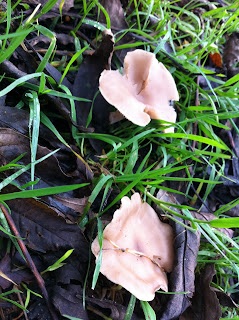It's been quite a week for our farmland birds; today Defra published an overview of wild bird populations in England from 1970 to 2010 confirming continued population declines for many of our once common species.
It doesn't make for cheerful reading- and if you don't fancy reading it the descending red line on the graph tells you all you need to know. Despite reports like this I try to remain positive and take heart (perhaps naively) in the small shreds of evidence I see around me that it's not ALL bad news.
I also take comfort in the fact that after a period of transition and soul-searching by many farmers- that we are resigned (reluctantly or otherwise) to the fact that environmental considerations are going to play a big part in our farming future. Yes some farmers drag their feet and understanably aren't keen on what they perceive as excessive red tape. But many farmers are aligning their ideas and practices with those of the conservation groups, members of the public and policy makers who are keen to help build a sustainable countryside.
Whether or not you feel farmers are helping drive these changes or are simply towing a line in return for subsidies is irrelevant. One by one, whether by carrot or stick, increasingly we're pulling in the same direction.
Given all this, given the tireless work by so many to steer the farming industry to a more environmentally-aware approach to food production and given the changes made by countless farmers it seems particularly frustrating that our Chancellor, George Osborne, is more than happy to have a rethink about the protection of 'things like habitats' to push for the perceived 'growth' this would bring.
I am at a loss for words. What sort of message does undermining the Habitats Directive send out to our farmers? What good can come from rubbishing the 'endless social and environmental goals' they have been duped into pursuing? How can they be expected to sacrifice their production potential in favour of farming for wildlife when Osborne is removing obstacles to large-scale 'developments' on environmentally important areas.
I know the Chancellor is referring specifically to Major Infrastructure Projects when he spouts this contradictory crud but his rhetoric reveals his attitude to the wider countryside. In short it's all well and good unless you can think of a better use for it. It seems measures put in place to protect the countryside for us all make a great scape-goat for our faultering economy.
I understand that continued growth is required, but short-sighted, misguided, desperate and destructive attempts to breath life into our economy are not the answer. I honestly assumed such attitudes had long been consigned to the history books- this is after all 2011 and in my view the silver-lining of this economic 'situation' was the chance to rebuild our economy on more sustainable foundations.
I understand that continued growth is required, but short-sighted, misguided, desperate and destructive attempts to breath life into our economy are not the answer. I honestly assumed such attitudes had long been consigned to the history books- this is after all 2011 and in my view the silver-lining of this economic 'situation' was the chance to rebuild our economy on more sustainable foundations.
So where does that leave our farmland birds? They've had 20 years of sharp population declines followed by 20 years of slowing population declines, and they already face an uncertain future. Continued declines might see that decending red line disappear off the bottom of that graph in the not too distant future- a terribly sad thought.
One thing is for sure; the 'Greenest Government ever' is sending out just the right amount of mixed-messages to ensure our farmland birds and any hopes of an environmentally sustainable farming system face an equally uncertain future.








































